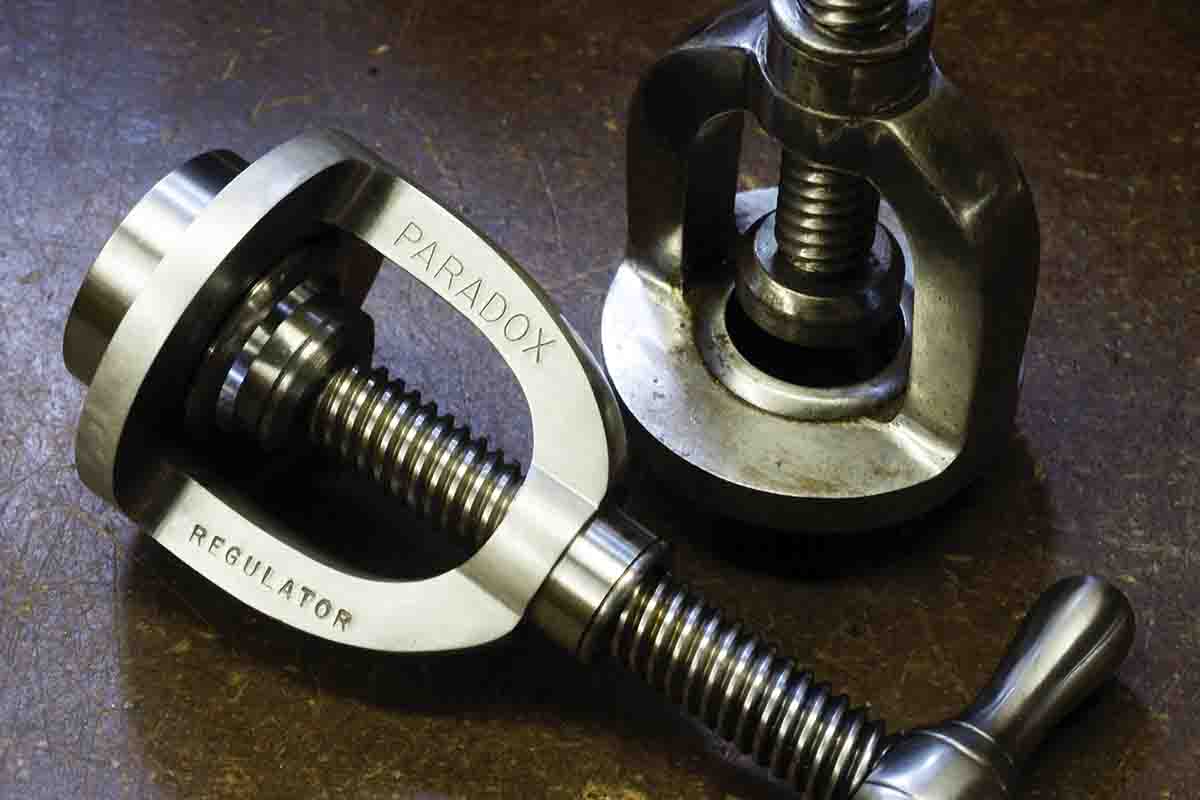Walnut Hill
Industrial Revolution: The Sequel
column By: Terry Wieland | November, 21

That’s right: As we witness the relentless ascent of the CNC machine, with one operator doing the work of a hundred people, maybe those other 99 can earn a living wielding a file and making things one at a time.
This view was evinced by none other than Britain’s illustrious news weekly, The Economist, a voice of sanity since 1843. Quoting a paper that appeared in the Academy of Management Annals, written by five prominent academics, The Economist suggested that the answer to technology-driven unemployment is a return to creativity and high-priced, high-quality, one-of-a-kind items like a Harry Pope target rifle, say, or a Marvin Huey gun case.
Correct me if I’m wrong, but was this not exactly what all the time-and-motion experts and automation gurus have been fulminating against since the first industrial revolution, which kicked off around 1765 with the emergence of the steam engine and the rise of England’s “dark Satanic mills?” Ironically enough, yes.
Readers will notice that I referred above to the first industrial revolution. According to industrial academics, there were actually four, with the world now on the verge of a fifth. The second dates from 1870, with electricity and the internal combustion engine. Then, in 1969, came electronics and the computer, followed by what is called “Industry 4.0,” with change driven by the internet.
As you can see, the first three were spaced a century apart, whereas the fourth came much sooner, and the fifth is arriving more quickly still.
The ambition at each step, when you strip away technical details, was simply increasing productivity. That was the entire goal. At first, this meant each worker increasing output: A man running a machine produces more widgets than a man wielding a file. Later, as machines produced more, and required fewer people to run them, futurists began to talk of “liberating” workers, and endowing everyone with more leisure time.
As it turned out, workers themselves viewed it differently: If a machine took your place, you were not liberated, you were unemployed, with no income and few prospects. This fear dates back to the Luddites of 1811, a British secret society that destroyed mills and machinery because they believed – rightly – that they would take away jobs.
Two centuries later, with the internet everywhere and digital technology running more and more of our lives, the prospect of mass unemployment as a result of robots and computerization is getting considerable attention from people who count. (Not that the Luddites did not count, you understand, but they were never mistaken for the decision-making intelligentsia.)
The Economist article uses the BBC’s “The Repair Shop” as an example. This is a television series about people bringing their old or damaged heirlooms to a shop full of men and women, expert in the old crafts, who restore these dilapidated treasures to their original glory. Over several seasons, they work their mysterious ways on everything from antique music boxes to carriage harnesses to porcelain statuettes. I was hoping someone would bring in a flintlock, but it never happened.
What struck me was people’s astonishment at what could be done with an item that appears damaged beyond repair. To gun guys, this is old hat. It’s our way of life. From masters like Doug Turnbull, with his own “repair shop” full of experts, to highly skilled craftsmen working on their own, like my old friend Edwin von Atzigen, who restored both shotguns and rifles for me, the gun business has always had such people.
The firearms industry on both sides of the Atlantic was a major player in all four industrial revolutions, as leader, victim, or both. Gunmaking was always a cottage industry, with guns made in one- or two-man shops, and this was true of England, the Continent, and the U.S. Samuel Colt changed that in the 1850s, when he adapted Eli Whitney’s expertise in machine production to his new-fangled revolver. Gunmaking then led the mass production, interchangeable-parts revolution until the advent of the automobile.
Colt’s example, however, did not change the business overnight, and never changed it completely. There was considerable resistance to mass production, notably in Britain, where the tradition of Holland & Holland, Rigby and Westley Richards cast a long shadow. The British system of small shops, master craftsmen and apprenticeships worked extremely well, and continues in modified form to this day. It is still training master craftsmen who can go out on their own and work the old way, to the old standards of excellence.
The study quoted by The Economist suggests that the solution to impending unemployment could be just such a system in other areas – a combination of individual creativity and skilled craftsmanship.
The Economist hearkened back to the days of craft guilds, wherein apprentices served long periods under the tutelage of their masters, but then drew the puzzling conclusion that long apprenticeships pounded the creativity out of the resulting journeymen, leaving them clinging to the old ways and obstinately opposed to anything new.
In the case of gunmaking, this is so far from the truth it beggars belief. England’s gunmakers, from 1850 to 1914, were the most extraordinarily creative crowd the world’s ever seen. At that time the apprenticeship was seven years, working 12 hours a day, six-and-a-half days a week, 52 weeks a year. When an apprentice graduated, he knew all the old, established ways, but also could see where they could be improved – and improve them they did.
The result was the Anson & Deeley action, Purdey underlugs, the Scott spindle, hammerless sidelocks, safety mechanisms, single triggers and so on – not one of which was the product of a professional designer in a large factory, paid by the hour.
Over the years, the apprenticeship period has been shortened, first to six years, then five. What has resulted is less a reduction in skill than a move to specialization. Rather than being all-around gunmakers, a new journeyman today might be a barrel maker, an action filer, or a stock maker.
The Economist makes the point that an unemployed auto worker cannot be retrained overnight to work in a skilled shop, and it’s certainly right about that. Nor could an autoworker attend one of the gunsmithing courses offered at various community colleges and learn how to do much more than bolt together some ready-made parts. A diploma in gunsmithing is useful, but it’s only the start.
From there, the answer is to go to work for someone like restoration master Doug Turnbull, or single-shot specialist Lee Shaver, or barrel maker Danny Pedersen, and learn how it’s done. Unfortunately, the realities of economics do not allow these operations to pay very much while people learn the trade, which puts the student in a situation similar to an apprentice in 1850. Back then, the apprentice’s parents paid the master to take the boy on and teach him, not the other way around. In effect, they paid tuition.
Anyone wanting to get into gunmaking as a highly-skilled craftsman must largely do it himself: Study the literature, learn to use a file, learn about heat treatment, bluing, checkering and wood finishes – all the elements that make a fine rifle a fine rifle, rather than a soulless product of mass production.
The one critical element is desire – the burning desire of a Harry Pope to create perfection, or of a James Purdey to make the ultimate in a shotgun.
One trend in favor of a return to individual creativity and craftsmanship, according to The Economist, is a growing willingness of the public to pay a higher price for something unique that is not mass produced, from “artisan” loaves of bread to craft beer, to a single-shot rifle.
Independent craftsmen depending on connoisseurs of fine objects for their livelihood is pretty much the way it has been since the days of Michelangelo – with guns and rifles especially, and industrial revolutions notwithstanding.


